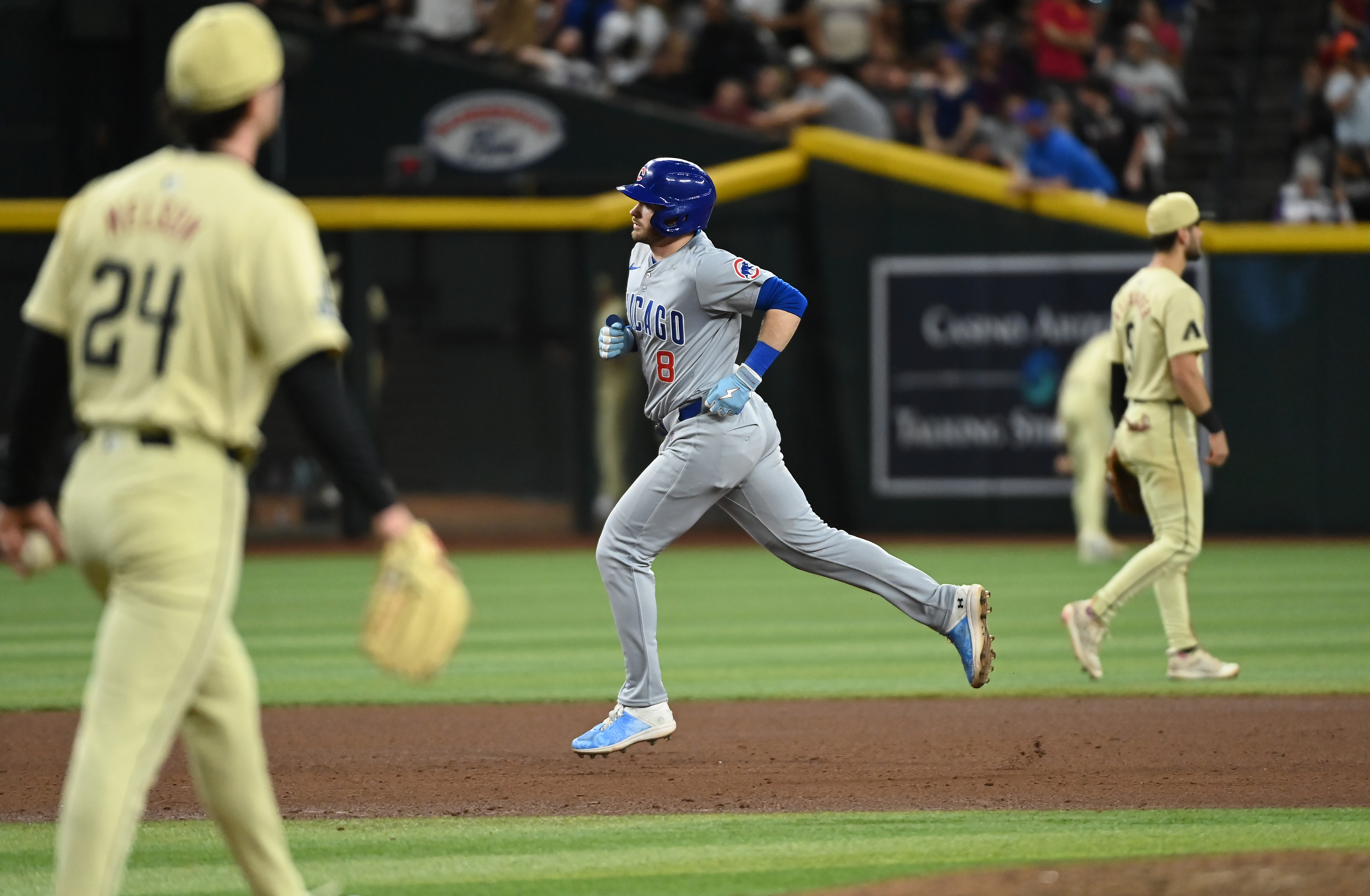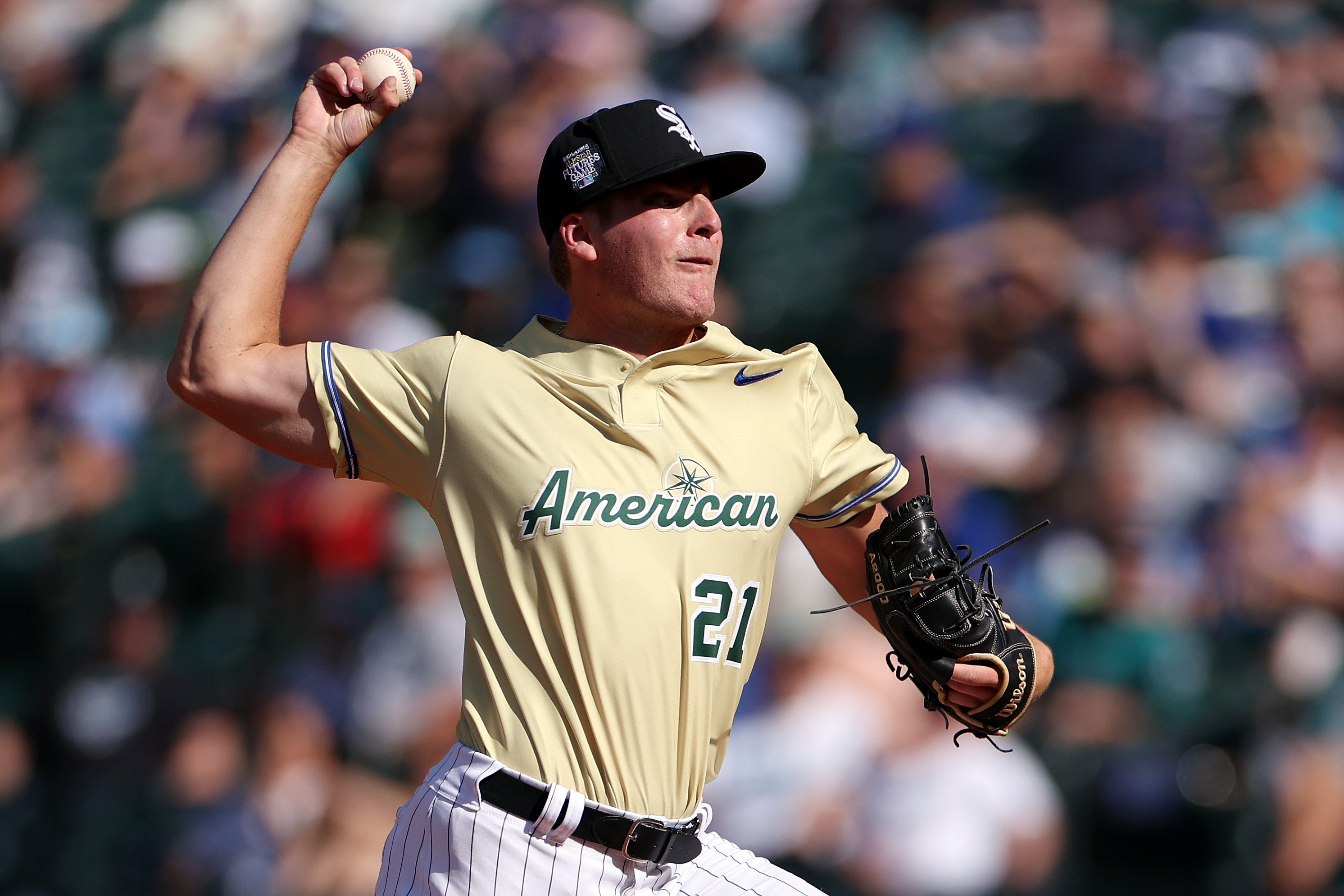It’s been another quiet offseason for the Cubs.
January is almost over and the Cubs have yet to commit a single guaranteed dollar to the big-league roster. After exceeding MLB’s luxury tax threshold in 2019, Theo Epstein and Co. are looking to get under the figure in 2020 and reset penalties entering 2021.
Barring any major surprises — i.e. a core player getting dealt before Opening Day — the club will return largely the same team from last season. That group has plenty of talent, but there are some question marks, like second base and center field.
A fan made waves at Cubs Convention last Saturday, reciting the definition of insanity to Epstein and Jed Hoyer during a baseball operations panel. With a similar roster in hand, why should fans expect anything different from the Cubs in 2020?
For Epstein, part of the answer lies in the continued development of homegrown players like Ian Happ.
Happ was supposed to be a key cog for the Cubs in 2019, but he was sent to Triple-A Iowa at the end of spring training after striking out 14 times in 52 at-bats. This followed a 2018 season in which he sported a 36.1 percent strikeout rate.
“He was striking out 30 percent of the time and we decided to send him down, because what we were seeing with Ian Happ, in our mind, wasn’t the finished product,” Epstein said Saturday at the Sheraton Grand Chicago. “We believe it’s the same way with a lot of our hitters, that’s there’s tremendous talent in there, but it wasn’t manifesting in major league games — which is all that matters — the way we needed it to.”
MLB
Happ was reportedly upset with the move, but his strikeout rate dropped to 26.3 percent with Iowa. After the Cubs recalled him on July 26, he posted a 25 percent rate in 58 games (156 plate appearances), slashing .264/.333/.564. He recognizes the demotion was beneficial.
“I got a lot of at-bats. I used it as a learning process,” Happ told NBC Sports Chicago Friday of his Triple-A stint. “To be able to come back and have success, it was a good way to finish the season."
Happ ended the season on a high note, slashing .311/.348/.672 in September with six home runs. He was tremendous over the season’s final eight games: .480/.519/1.200, five homers and 12 RBIs.
“Just being more aware of the ways guys were gonna pitch me,” Happ said regarding his hot September. “There’s some tweaks. For me, it was more about handling different pitches and when to use two different swings — when to be a little bit more defensive, when to put the ball in play. It led to results.”
Cubs players have been criticized in recent seasons for a seeming unwillingness to shorten up at times to put the ball in play. Their 73.8 percent contact rate in 2019 was last in the National League, though Ben Zobrist’s personal absence contributed to the low figure.
Happ posted a 71.7 percent contact rate, up from his 63.5 percent rate in 2018.
“He went through a really difficult stretch in Iowa, making significant adjustments to his approach and his swing and as a person, growing from some failure,” Epstein said. “When he came back up towards the end of last year, his strikeout rate was under much better control, he had much more contact ability.
“He wasn’t driving the ball quite the same, and then by the end of the year, he had maintained that better contact rate, was starting to drive the ball again, and it looked pretty dynamic and pretty promising for the future.”
It’s not a coincidence Happ made strides with Iowa. He got to work on his swing in an environment where he played every day. This wouldn’t have been the case in the big leagues, especially if his struggles lingered.
Happ started each of the Cubs’ last six games; he said it's huge for his confidence knowing he'd be playing every day.
“It’s huge, it’s huge. I think that’s what everyone’s striving for in this league, is be able to [play every day],” he said. “For me, after that stretch and being able to finish strong and look back on a solid year, that’s big moving forward.”
The Cubs roster may look the same, but there’s plenty of room for internal improvement. Pitchers will continue adjusting to Happ, but he’s a better player for what he went through last season. He can take what he learned and carry it into 2020.
“So now, same player on the roster — and I understand the definition of insanity — but to expect Ian Happ to grow from what he’s gone through and benefit from the coaching that he’s gotten,” Epstein said, “and the lessons that he’s learned and the adversity that he’s gone through, and go out and be a productive player for us next year in a certain role, I don’t think is insane.”
“It’s just about sticking with the process, understanding that that’s what worked and that’s what you want to do,” Happ said. “It’s not always easy at the beginning of the year at Wrigley. It’s cold, it’s windy. The results don’t always show up. But if you’re true to the process and you keep going, by the end of the year you’ll be at a good spot.”
Click here to download the new MyTeams App by NBC Sports! Receive comprehensive coverage of the Chicago Cubs easily on your device.

